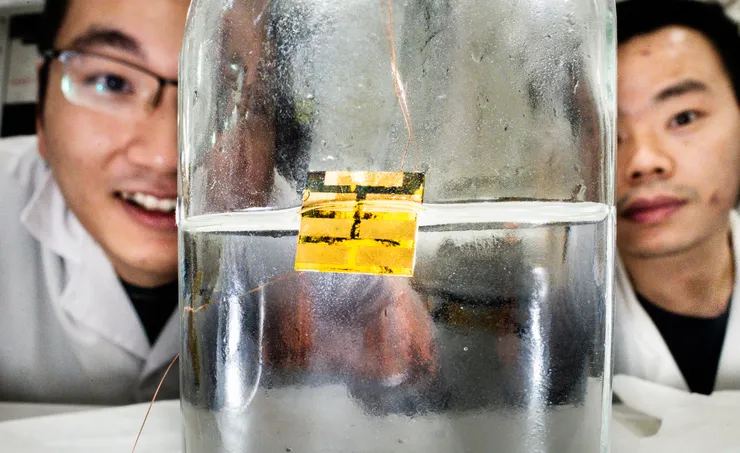According to a study published in Nature, researchers at Linköping University have created a technique to repeatedly recycle every component of a solar cell without using environmentally dangerous solvents. The efficiency of the recycled solar cell is identical to that of the original. Water serves as the primary solvent in the perovskite solar cell.
 One of the most promising technologies for next-generation solar cells involves perovskite. Now, researchers at Linköping University have developed a method to recycle all parts of a perovskite solar cell repeatedly using water as the main solvent. Image Credit: Thor Balkhed
One of the most promising technologies for next-generation solar cells involves perovskite. Now, researchers at Linköping University have developed a method to recycle all parts of a perovskite solar cell repeatedly using water as the main solvent. Image Credit: Thor Balkhed
As AI advances and transportation becomes more electrified, among other factors, electricity consumption is predicted to rise sharply in the upcoming years. The cooperation of various sustainable energy sources is necessary to prevent climate change.
Solar panels made of silicon have been available for over 30 years, and solar energy has long been seen as having enormous potential. However, an unforeseen issue has arisen because first-generation silicon solar panels are nearing the end of their useful lives.
There is currently no efficient technology to deal with the waste of silicon panels. That’s why old solar panels end up in the landfill. Huge mountains of electronic waste that you can’t do anything with.
Xun Xiao, Postdoc, Department of Physics, Chemistry and Biology (IFM), Linköping University (LiU)
“We need to take recycling into consideration when developing emerging solar cell technologies. If we don’t know how to recycle them, maybe we shouldn’t put them on the market at all,” added Feng Gao, Professor of Optoelectronics at Linköping University (LiU).
Avoid Another Landfill
Perovskite is one of the most promising technologies for next-generation solar cells. In addition to being lightweight, flexible, and transparent, they are also reasonably priced and simple to produce. These characteristics allow perovskite solar cells to be installed on windows and various other surfaces. They can also generate electricity from up to 25% of solar energy, comparable to silicon solar cells used today.
There are many companies that want to get perovskite solar cells on the market right now, but we’d like to avoid another landfill. In this project, we’ve developed a method where all parts can be reused in a new perovskite solar cell without compromising performance in the new one.
Niansheng Xu, Postdoc, Linköping University
Perovskite solar cell recycling must be effective and ecologically friendly, though, because these cells have a shorter lifespan than silicon solar cells. A small amount of lead is also present in perovskite solar cells, which is required for high efficiency but also puts a lot of strain on an effective recycling system.
In many parts of the world, producers are required by law to gather and recycle solar cells that have reached the end of their useful lives in a sustainable manner.
Water as the Solvent
Techniques for breaking down perovskite solar cells already exist. This primarily entails using a material known as dimethylformamide, frequently found in paint solvents. It is poisonous, dangerous for the environment, and may cause cancer. Instead, the Linköping researchers have created a method that uses water as a solvent to break down the deteriorated perovskites. More significantly, the water solution can be used to recycle high-quality perovskites.
“We can recycle everything – covering glasses, electrodes, perovskite layers, and also the charge transport layer,” says Xun Xiao.
The researchers' next task is to refine the technique for use in an industrial process on a larger scale. The team thinks that when supply chains and related infrastructure are established, perovskite solar cells can eventually contribute significantly to energy production.
The Swedish Energy Agency, the Wallenberg Initiative Materials Science for Sustainability, the Knut and Alice Wallenberg Foundation, and the Swedish Government's strategic area in advanced functional materials, or AFM, at Linköping University funded the study. Researchers Feng Gao, Niansheng Xu, and Xun Xiao have submitted patent applications.
Journal Reference:
Xiao, X., et al. (2025) Aqueous-based recycling of perovskite photovoltaics. Nature. doi.org/10.1038/s41586-024-08408-7